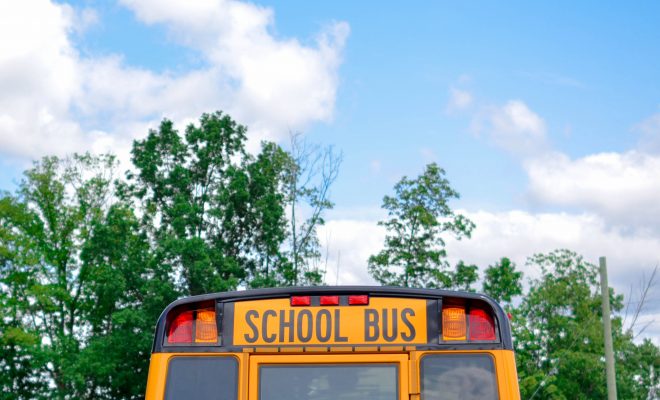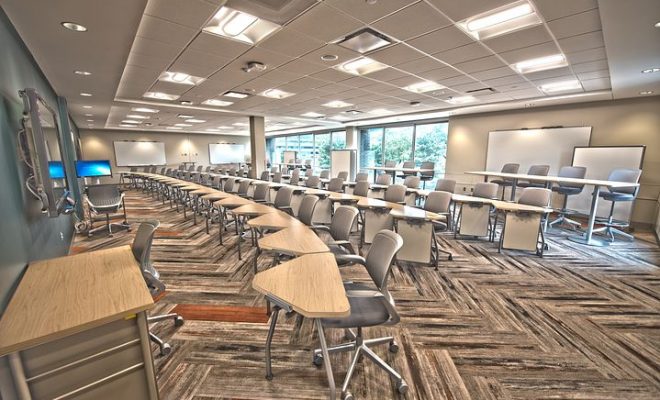Creative Ways to Close the Achievement Gap

I have researched the achievement gap for over 9 years. This is what I have learned.
Our political leaders have finally begun to recognize the importance of education to the survival of individuals and societies in the 21st century. The other aspect of this conversation is all too familiar: while our children do learn, not all of them are learning as much or as well as they should to meet the demands of the new century.
In the United States, there are low levels of achievement among students from low-income backgrounds and students of color. This is in contrast to the fact that students in educationally supportive states and those from advantaged backgrounds easily rival students from across the world. To put this into context, nine year-olds from White, advantaged backgrounds read as well as thirteen-year-old Black and Hispanic students. In addition, even though funding has increased, it has done so unequally and the achievement gap has grown.
Typically, schools that serve a large number of “minority” students face big issues, which put them at a disadvantage when compared to other schools. They have to deal with lower budgets, larger classes, and often less qualified teachers and school leaders. The effect of this has been to create an “educational debt” that negatively affects the students in these communities.
Addressing this issue will require major efforts. Recruiting great teachers is important, but it is not the whole answer. Systemic elements are needed to support the work of talented educators. It is not the people who are at fault: it is the system that needs an overhaul.
As Ted Sizer once put it, “The people are better than the system.” We have come a long way in understanding how to create more effective school leaders and build a national commitment to educational leadership. However, we are not there yet. We need leadership to forge all of the various elements of school reform today into well-functioning systems that make sense for those working hard to achieve results for students. If this is accomplished, we will begin to close the achievement gap.
What would happen if we closed the achievement gap?
One study after another has shown a wide educational achievement gap between the poorest and wealthiest children in the United States. This prompted researchers at the Washington Center for Equitable Growth, a group focused on narrowing inequality, to study and conclude that if America could improve education performance for the average student, everyone would benefit.
The U.S. ranks behind more than 33 advanced industrialized countries that make up the Organization for Economic Cooperation and Development when it comes to math and science scores. The study used scores from the 2012 Program for International Student Assessment, a test used around the world to measure and compare achievement.
America ranks behind countries such as Korea, Poland and Slovenia in the 24th spot
Elimination of the achievement gap in the U.S. will boost the economy — but this requires raising the country’s average score to 1,080. The average combined score for the U.S. is 978, and the O.E.C.D average is 995.
If the U.S. could move up a few notches to number 19 – so the average American score would match the O.E.C.D. average – it would add 1.7 percent to the nation’s gross domestic product over the next 35 years, according to estimates by the Washington Center. This could lead to approximately $900 billion in higher government revenue.
If the U.S. scores matched Canada, number 7 of the O.E.C.D. scale, America’s gross domestic product would increase by 6.7 percent. After taking inflation into account, this is a cumulative increase of $10 trillion by 2050.
Now let’s look at those who are finally starting to get it, what their solutions are, and how these solutions are going to help us take our place on the stage when it comes to the quality of our education.
Ten Innovative Solutions for Closing the Achievement Gap
Here are ten innovative solutions Americans—whether it’s the government, educators, colleges, activists, or just ordinary concerned citizens—are taking to promote educational equity in this country:
- D.C. invested $20M in minority male students.
D.C. Schools Chancellor Kaya Henderson announced a plan to invest $20 million to support programs for Washington, D.C.’s men of color. This includes opening an all-boys college preparatory high school in 2017 under the “Empowering Males of Color” initiative.
The funding for the support programs will come from private and public sources. The D.C. Public Education Fund is working to raise money to support these initiatives outside the operating budget.
Henderson’s decision to invest seriously in the specific needs of minority boys has everything to do with “mathematics,” she says. Black and Latino boys make up 43 percent of the students enrolled in D.C.’s public schools. The graduation rates, reading and math scores, and attendance of minority boys are all lagging in the District. By fourth grade, nearly half of the city’s black and Latino male students are reading below grade level.
In the district, 48 percent of black male students and 57 percent of Hispanic male students graduate in four years, compared with 66 percent of their classmates. Only about a third of black male students are proficient in reading and math, compared with nearly 66 percent of students who are not black or Latino males, according to D.C. CAS scores.
The push is part of a citywide effort led by Mayor Muriel E. Bowser, who is working to improve equity and increase opportunities for black and Latino males. The efforts also align with President Obama’s work to help keep male minority students in school and out of prison.
I’m ecstatic to see the effort and money dedicated to increasing the success of minority male students in the District. These young men deserve the investment that Washington D.C. is making in them, and I predict we will see big improvements in graduation rates and reading and math scores moving forward.
- Maryland graduates more Hispanics and African Americans from high school.
More than 86 percent of students in Maryland are earning diplomas within four years, a record-high graduation rate for the state, according to data released this year.
Maryland state officials celebrated the achievement, noting that the rate has risen more than four percentage points since 2010. At that time, fewer than 82 percent of high school students graduated in four years.
“We are so excited,” said Maryland’s State Superintendent of Schools Lillian M. Lowery, sharing that, as graduation rates improved, dropout rates fell. “We have to give all of the credit to the creative work that’s going on in our districts and our schools.”
Lowery also shared that Maryland’s 24 school districts now target at-risk students and build individualized learning plans to meet each student’s needs.
State data tells us that the dropout rate in Maryland declined from 11.9 percent in 2010 to 8.4 percent in 2014.
Despite the gains, statewide numbers show that an achievement gap still exists, with lower graduation rates for Hispanic and African-American students. However, the gap did narrow between 2011 and 2014.
Maryland’s graduation rate for African-American students is up more than four percentage points since 2010, to nearly 80.5 percent statewide. The rate for Hispanic students also rose nearly six percentage points during the same period, up to 77.5 percent.
There has been a lot to celebrate in the state of Maryland; the numbers show change is happening in the state, and for the better. I believe a big reason we are seeing these changes is thanks to the individualized plans that Maryland now builds for at-risk students. I hope we continue to see higher education rates, lower dropout rates and a narrowing education gap.
- Delaware students rallied for more African-American teachers.
In 2015, local students in Sussex County, Delaware, took a stand to rally for more African-American teachers and discuss issues they have faced at school, as reported in the News Journal.
The forum hosted by the local League of Women Voters to mark Black History Month included adult speakers, but three high school students generated the biggest uproar.
Many students only have one or two African-American teachers throughout their entire K-12 experience and feel that they could better identify with teachers who look more like them. One example given in the News Journal is Sussex Tech, in which is 90.3 percent of teachers are white, 7.5 percent of teachers are black, and only one teacher is Hispanic. In the school, 66.5 percent of students are white, 17.9 percent are black, and 12.4 percent are Hispanic. The percentages do not add up, and it is clear that students are not seeing an accurate representation of their ethnic population in their teachers.
I agree with the students of Sussex County: we need more African-American teachers in our schools. Teachers in our country are simply not as diverse as its students. Students will perform better when they can identify with and relate to their teachers, and I believe we could narrow and even close achievement gaps by recruiting more black educators.
In addition, I think increasing the number of teachers of color can also help students who are not of color. Putting black teachers in front of non-black children could prevent stereotyping and promote acceptance of diversity and equity.
- Michigan non-profit provides “middle-income” resources to lower-income families.
Educators in Ann Arbor, Michigan, are striving to close the achievement gap between black and white students and poor and middle-class students. However, the school district needs some help, and Community Action Network has stepped up to the plate.
Community Action Network, or CAN, is a nonprofit organization that offers stable housing for adults and educational programs for children who live in low-income Ann Arbor neighborhoods. Its programs give students the same support middle-class families can provide their children. Families in poverty may lack Internet access or an adult to help them graduate, for example, and CAN steps in to bridge this gap.
Around one-quarter of Ann Arbor Public Schools students come from a home adversely affected by poverty. And for decades, Michigan’s standardized test, such as the MEAP and the ACT college entrance exam, have shown an achievement gap between black and white students and those from low- versus middle-class homes. However, the gap is narrowing.
The Ann Arbor News reported that, in MEAP math and reading exams, black students are achieving proficiency rates that are 23 to 41 percentage points lower than their white peers. Five years ago, the gap was 33 to 44 percentage points. CAN is an example of an outside service organization that has stepped up to improve educational outcomes for K-12 students and is succeeding.
This gap is still too wide, of course, but positive change does not come overnight. Gradually closing this achievement gap is a step in the right direction. We also need to see changes in parenting practices and better support for early intervention and education. It really does “take a village,” and I hope the success in Ann Arbor can be duplicated in other school districts across the country.
- Call Me Mister recruits male minority teachers.
Teachers are a rare breed. They are grossly underpaid and severely overworked. To make matters worse, the type of diversity we really need to see in classrooms doesn’t exist. It’s also why teacher recruitment is a fluid process.
The Call Me MISTER Program first instituted in South Carolina has made its way south and onto the Edward Waters College campus. Starting in 2000 at Clemson University, the Call Me MISTER Program intended to “increase the pool of available teachers from a broader, more-diverse background particular among the State’s lowest performing elementary schools.”
In essence, the program is needed to tend to the low number of minority male teachers. According to the Department of Education, just two percent of teachers nationwide are black.
This program aims to increase that number by offering scholarships to qualified applicants.
To apply to the program, applicants must have a high school diploma with a 2.5 GPA or better, letters of recommendations, an ACT score of 21 or higher, an SAT score of 1000 or better, and two essays. One must detail why the applicant is interested in the program, and the other’s topic is “Why I Want To Teach.”
Having more black men in the classroom is great for diversity and will increase numbers tracked by the government. But for many students who need positive reinforcement through sight and will view black men as strong role models, this program certainly is one of the more important ones being offered by our institutions of higher education.
- Year-round students help low-income students succeed.
In comparison to children from low-income and minority groups, children belonging to middle class families enjoy more learning opportunities even during school breaks. Thus, extended school days may help low income and minority students achieve more learning throughout the year, and lose less of this new knowledge.
Year-round schools offer a variety of specific advantages in addition to increased learning. Some of the significant advantages include better student performance, reduced absenteeism among students and teachers, better discipline, diminished stress on teachers, and better learning opportunities for students. Schools following multi-track programs also enjoy easing of problems due to overcrowding, proper utilization of resources, and cost savings. The following sections discuss some of these specific advantages in more detail.
Teachers and students experience a closer relationship in year-round schools than they do in traditional, shorter-calendar-year schools. In the absence of any long-term break from school, students do not feel detached from the school environment. Furthermore, the additional time allows teachers to offer students more time to achieve better results, creating a sense of excitement and interest in students, and a sense of unified effort between student and teacher. This is likely due to an increased sense of belonging and accomplishment.
Low income students have opportunities to garner habits for improved learning skills while attending year round schools, which in turn helps to close the achievement gap. The experience of immersion in learning offered by year round schools, with more time spent in classrooms, proves to be beneficial to many students from low socioeconomic backgrounds, including those for whom English is a second language. Many second language learners who have difficulty mastering English are advantaged by the opportunity to be immersed in English during intersession classes. They also develop better relationships with other students, and begin to feel more connected to the school culture.
In addition to improving their academic standing, students at year-round schools may also have opportunities to develop creative talents they might not otherwise have explored, such as music and art. These classes work as a catalyst to improve personal growth. Results from research studies conducted on student behavior in year-round schools, as compared to traditional schools, suggest that there is a significant difference between the two in terms of self-confidence and self-concept. Other studies have found that year-round students have fewer inhibitions, and feel positive about their schooling experience.
Various research studies reveal that students attending year-round schools often perform better than students in traditional, shorter-school-year schools. Differences in performance among traditional and year round calendar students from similar home environments are particularly important to note. Much has been written about the achievement gap between students from middle class backgrounds and those from low income backgrounds. However, low income and middle income students appear to make comparable achievement gains during the school year.
When low income students spend time away from school, the achievement gap widens. In fact, the rate at which the achievement gap widens between children from different socioeconomic backgrounds actually accelerates, when low income students are not in school. Research shows that performance among students from low income backgrounds improves when they attend schools with modified calendars. It appears then, that modified school calendars should be considered as one of the viable options for reducing the achievement gap.
- Technology is the great equalize.
Here’s why: More high school graduates: We have recently experienced the highest graduation rate the country has seen since 1974. Educators are collectively working harder to help students make it to the high school finish line and get prepared for college and the workforce. There is a lot of credit to be handed out for the successful graduation rates around the country (of course, there are still plenty of areas for improvement) but I think one shining area deserves a lot of the praise: technology.
The website DropoutPrevention.org singles out technology as a leader in high school graduation upsurge. The site states:
“Educational technology is needed for a variety of reasons. It provides an alternative method of learning for those who struggle to learn using traditional methods.
Technology can be used to address multiple intelligences and also to provide authentic learning experiences for students.”
In other words, technology has made it possible for students who fall off the traditional path to jump back on and finish what they spent most of their childhood working towards. This may be in the form of taking remote classes from home, remedial classes in on-campus computer labs or even by enrolling in full-time online schools, public or private.
Having in-classroom technology more directly impacts the graduation rate by providing customized learning experiences. A student who needs extra help on a particular topic need not hold up the entire class, or feel embarrassed asking for that help, when there are computer modules and tablet apps available for individual learning experiences. Teachers who spot a trouble area with a particular student can gear that teen towards more exercises to master the topic. Of course technology is not the magic wand to fix all problems, but it does allow for more flexibility of the learning process which in turn makes it easier for a wider group of students to stay in classrooms until the end of the K-12 journey.
Simplified education for students with disabilities: In 2011, 22 percent of non-institutionalized adults with disabilities had less than a high school education. If this statistic was applied to the general population, my suspicion is that there would be an outcry to reform K-12 education to have better graduation results. But for students with disabilities, there is no shock or outrage and that is something that has to change. The key to improving the educational experience for students with disabilities is better accommodations in schools and continued improvements in assistive technology.
Assistive technology in K-12 classrooms, by definition, is designed to “improve the functional capabilities of a child with a disability.” While the word “technology” automatically conjures up images of cutting-edge electronics, some assistive technology is possible with just simple accommodations. Whether high-tech or simple in design, assistive technology has the ability to transform the learning experiences for the children who benefit.
Here is a look at strides being made in just a couple of common assistive technology areas:
Alternative input devices: These tools are designed to allow students with disabilities to use computers and related technology easily. Some alternative input devices include touch screens, modified keyboards and joysticks that direct a cursor through use of body parts like chins, hands or feet. Some up-and-coming technology in this area is sip-and-puff systems, developed by companies like Microsoft, to perform computer functions through the simple process of inhaling and exhaling. On-screen keyboards are another area of input technology that is providing K-12 learners with disabilities better use of computers and mobile devices for learning.
Sensory enhancers: Depending on the disability, children may need to learn differently than their peers. Instead of ABCs and numbers first, a child with language hindrances may benefit from bright pictures or colors to learn new concepts. Sensory enhancers may include voice analyzers, augmentative communication tools or speech synthesizers. With the rapid growth of technology in the classroom, these basic tools of assistive technology are seeing great strides.
Finding the answers to higher achievement for urban students is a complicated process, but I believe that technology can be a solution. More individualized learning is now possible. In cases where overcrowding is detrimental to learning experiences, mobile technology can serve as a placeholder teacher in terms of directing students and keeping them engaged in learning when the physical teacher is unavailable.
- Free community college can change the tide of education for minorities (but only if we take care of these issues first).
During his sixth State of the Union address, President Barack Obama spelled out a proposal that would offer two years of community college for free to any student that wanted to take advantage of it. This program would, essentially, make the first two years of a college education a basic American right – aligning it with universal access to a K-12 (and even pre-K in some states) education. Of course there would be some requirements for having access to that right and it would not be mandatory, but the basic premise would be the same: free higher education for any American student.
Arguably this plan helps everyone in the long run. More Americans with access to a college education means a stronger economy and less college debt means more money in the pockets of college graduates that they can then pump back into that economy. Proponents of the plan say that it will particularly help minorities when it comes to college attendance because it removes the cost barrier that tends to discourage these groups from enrolling.
I say that access to free community college will not actually help minorities – at least not on its own.
We know that there is an achievement gap in P-12 learning and that black students drop out of high school at a rate that is twice as high as white students (for Hispanic students the rate is over three times as high). This happens despite these minorities having access to the same opportunities (in theory) as their white counterparts. A public education is free to these students, yet minority students still drop out of high school at rates that are simply too high. So the assumption that offering free college classes and credits will be a better situation for minorities is flawed, based on what we know about educational access and its influence on achievement in younger grades.
We need more than free access to community college to help minorities succeed in higher education settings. Starting in our K-12 schools, we need better targeting of struggling students and remedial interventions that take effect immediately, not after a standardized assessment points out that a student is already failing. We need mentorship programs, both at the high school and community college level, where minority students can connect with the success stories of people who look like they do and came from similar backgrounds. We need more people of color who enter the teaching profession – particularly black males – so that minority students see themselves somewhere in the education process and so more attention is paid to the cultural differences that influence learning environments.
When these minority students enroll in community college, we need orientation programs that last an entire semester or year that keep students on track and accountable and ward off any issues that may cause them to quit too soon. We need a job-based focus that funnels students into the right classes at the right times and keeps them on target for their end goals. We need better guidance processes, mentorship programs, job placement results and awareness of the distinct issues minority students face when they arrive in college classrooms. If all of these things work in conjunction with the free access to community college classes then we may just be on to something.
Money is not the only barrier that keeps minorities from enrolling in and finishing college classes. Removing that obstacle is certainly a step in the right direction but needs other supporting initiatives to really achieve its aim: a diverse highly-educated American public.
- Pre-kindergarten with guided play helps underprivileged children in New York get a leg up.
Over 50,000 public school children in New York embarked on their formal education as the city began expansion of its pre-K program.
The goal of the early-education initiative is to decrease the achievement gap between those growing up in Brooklyn, and those in the world of West End Avenue.
Under Carmen Farina, the schools chancellor, more underprivileged children would theoretically be taught the in the same ways the city’s affluent children are: according to the fundamentals of immersive, play-based, and often self-directed learning.
Nearly, if not all, private preschools in New York City align itself with the philosophies of Reggio Emilia, an education model that gained prominence in the 1990s. His belief was that children need some control over the course of their learning and the ability to express their various languages. Art, music and imaginative play take on substantial roles.
The new prekindergarten classrooms will have different areas devoted to diverse kinds of play. Certain subjects will be the focus for one to three weeks, and dramatic play will be incorporated.
The city’s educators plan to promote an environment of exciting and digressive learning with the intent to reduce the enormous word deficits many children come to school with.
Over 4,000 teachers received training for the education expansion over the course of three days. The Education Department plans to continue coaching the teachers and offering professional development as the year proceeds.
The type of classrooms New York City administration is aiming to build is exactly what the city needs. The incorporation of and focus on guided play in the prekindergarten classrooms will create an environment that encourages learning. This form of teaching, especially in combination with parental involvement, can help students reach Kindergarten readiness and take on elementary school with their best foot forward.
- Rewards for those who put solid effort into reducing the achievement gap.
In 2014, two school districts were awarded The Broad Prize for Urban Education. The annual award is given to large, urban districts that demonstrate strong overall student performance and success in reducing achievement gaps among low-income and minority students.
Orange County Public Schools in Florida and Gwinnett County Public Schools in Georgia were awarded this prize. The $1 million prize is split evenly between the districts and the money will fund college scholarships for high school seniors.
According to Bruce Reed, president of The Eli and Edythe Broad Foundation who sponsors the competition, the two districts share comparable demographics: both are diverse and among the largest districts in their county in terms of enrollment.
Chief executive officer and superintendent of Gwinnett County Public Schools J. Alvin Wilbanks attributes the district’s success to effective education. Gwinnett County has focused on leadership development and providing teachers helpful information related to attendance and student achievement, to improve their instruction.
The districts high school seniors also have the highest SAT participation rate among eligible districts for The Broad Prize.
First-time finalist and winner Orange County in Florida has made remarkable gains in student achievement in recent years. The district has focused on centralizing curriculums and programs throughout the district so that educators spend less time getting new students up to speed, which often actually slows them down, says superintendent Barbara Jenkins.
The Broad Foundation tells us that the district has narrowed income and minority achievement gaps, improved college readiness and raised achievement among low-income middle school students.
The Broad Prize is a great award for public schools that work diligently to improve their student and teacher success. I hope that other schools strive to follow in the footsteps of Orange County and Gwinnett County Public Schools so we can narrow the achievement gaps in the US.
A final note: Why we must close the achievement gap
As I mentioned earlier, closing the achievement gap would both make us competitive globally and stimulate the economy.
But perhaps the biggest way to illustrate why we need to close the achievement gap is to show what is happening now.
Right now, poor students see less funding in 23 states. Poverty makes it more difficult for children to succeed in school, and they come to school at a disadvantage. These students tend to have more needs than their middle-class and well-off peers. Children from poor families are behind their counterparts on nearly every measure of academic achievement.
In 23 states, state and local governments together spend less per student in the poorest districts than those that are more affluent, according to 2012 federal data reported in The Washington Post. The differences in funding are severe in some states. Pennsylvania spends 33 percent less on the poorest school districts per pupil than on the wealthiest. In Missouri, the difference is 17 percent.
Across the United States, states and localities on average spend 15 percent less per pupil in the poorest districts than in the most affluent, according to The Washington Post.
Right now, the opportunity gap is widening in America. The economic status of the parents of today’s K-12 students determines the long-term economic quality of the children’s lives more today than in previous generations. Children living in poverty conditions today are more likely to stay in them throughout adulthood than in previous generations, according to new information from Robert Putnam, author of “Our Kids: The American Dream in Crisis,” which examines how kids experience inequality the most and the devastating long-term effects.
Putnam revealed to Mind/Shift that the opportunity gap is making it impossible for a third of kids to gain access to the right steps to achieve the American Dream. This “opportunity gap” is a result of many factors, including a lack of equality in resources and treatment of students in America’s school systems, starting as young as preschool.
Imagine what happens when students who are already disadvantaged at home come into schools that are underfunded. This amplifies the problems these students already have.
Look at what we have right now: an educational system that is world-class only for an advantaged class of students. Students who are from low-income, minority, or disabled backgrounds falling through the cracks at school. Young black men and Hispanics dropping out and heading for a life of incarceration. An unfilled demand for STEM careers.
Compare that to what could happen. A world-class educational system that improves the economy and serves its people. More contributing citizens who are successful in a knowledge and information-based economy. Improving the equity in our educational system has the power to allow us to shine on the world stage. But on a more personal level, the quality of life will be better for everyone, not just those who are adversely affected by the achievement gap.
Let’s turn ten ways to close the achievement gap into a thousand ways. Let’s reform our educational system from the preschool level to the university level, and see how America thrives as a result.





